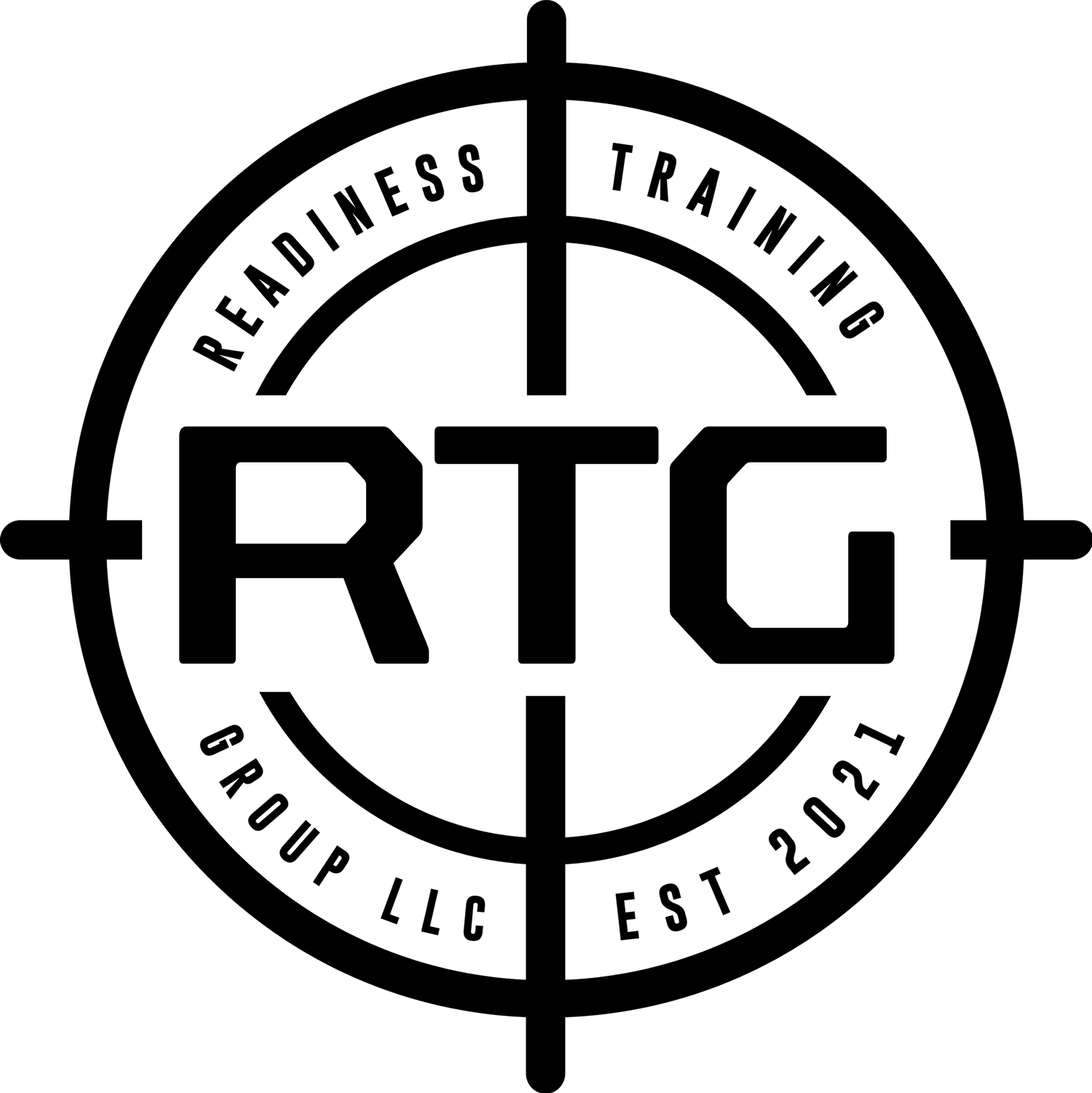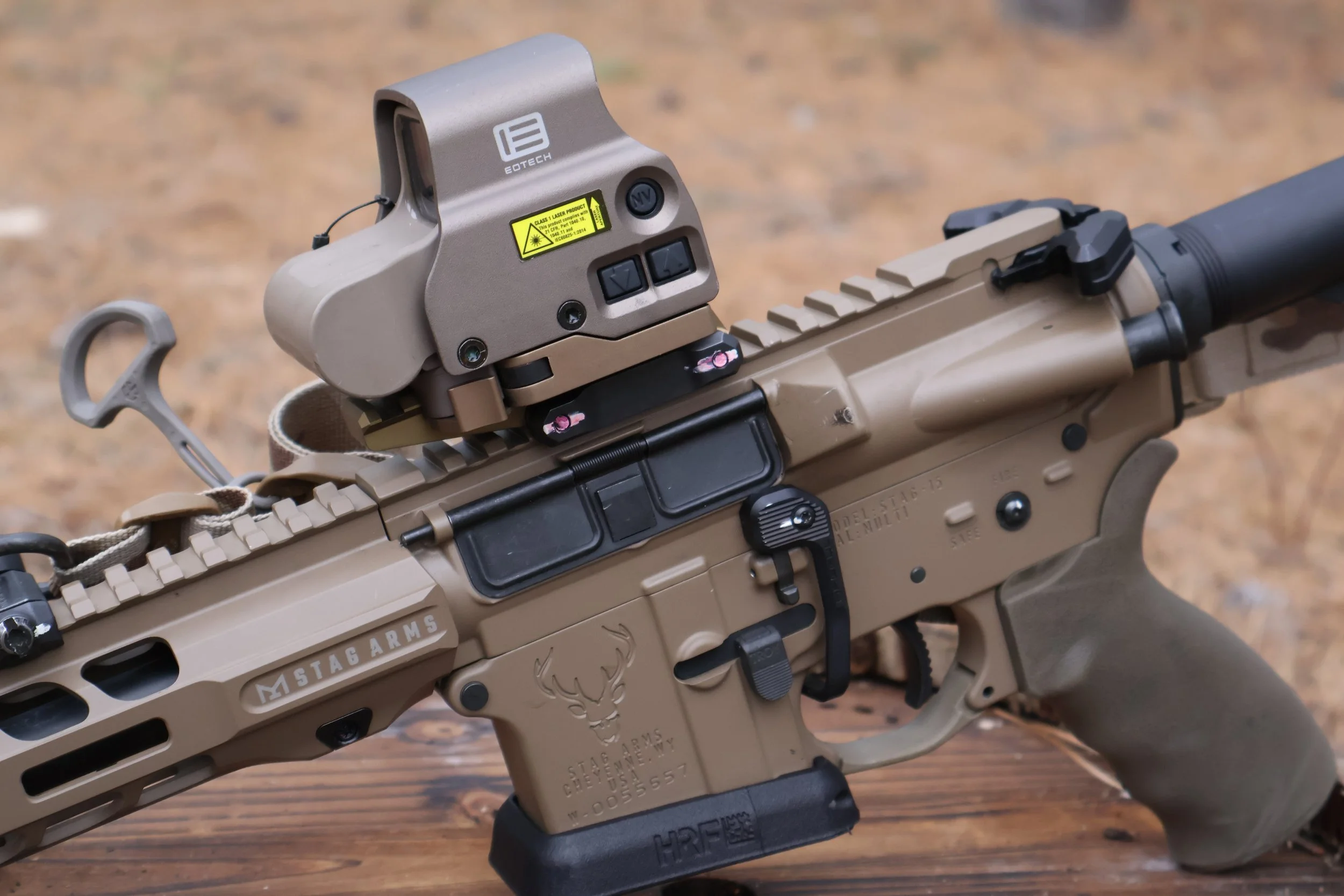Choosing an Optic
“There are no solutions, only tradeoffs” – Dan Dowe
If you are looking to add an optic to your rifle, shotgun, pistol caliber carbine or other type of long gun, then we are looking to provide some advice when selecting a solution to fit your needs. There is a plethora of optics in all shapes and sizes on the market and it may seem like a daunting task to pick an optic that is worthy of your coin. Our cadre have experience with using red dots, holographic sights and low powered-variable optics in either a duty or competition capacity. Each category of optic has its benefits and deficiencies, but the tradeoffs may be advantageous for the realm you are employing it in.
Red Dots:
Red dot sights are exactly what the name entails, an electro-optical sight either battery or now solar powered LED “dot”. These dots are measured in minutes of angle (MOA), which helps determine how “precise” the optic is. The usual range of dot sizes are anywhere from 1 MOA to 12 MOA depending on the type of optic, manufacturer, and platform it’s predominantly designed for. An example of this would be an Aimpoint T2 red dot sight with a 2 MOA sized dot, which means if the shooter were aiming at a target 100 yards away, the red dot would cover or obscure roughly two inches of the target.
When it comes to shooting up close at “CQB” distances, a large dot is advantageous because it covers the target sooner, allowing for engagement sooner. An optic with a 1 MOA dot like an EOtech holographic sight and a 65 MOA ring around the dot have a reticle that provides the best of both worlds. The small center dot provides precise engagement for small target areas up close or targets further in distance. The 65 MOA ring acts as a large dot that provides a level of sight confirmation at CQB distances allowing the shooter to engage a target without the center dot exactly covering a target. This means that on a humanoid silhouette, the ring, often referred to as the donut of death, is covering anywhere on the silhouette, rounds fired will hit the silhouette.
So as for actual models and manufacturers that we have experience with or recommend, it all depends on your budget and what you are going to be using it for. If it is a hobby rifle for plinking, recreational shooting, or activities along those lines, then a cheaper but quality optic is for you. I personally own the Primary Arms SLX MD-20. They are quite affordable and seem to be of good quality. Primary Arms makes quality optics in a wide range of prices from very budget friendly to some high-end optics, all of which are feature rich. The MD-20 has impressed me so much that I bought three of them.
The dot is crisp, it’s lightweight and has the same footprint as an Aimpoint Micro H/T series, so there are a ton of quality mounts in all sizes available for it. You will never go wrong buying anything Aimpoint offers…if you can afford to do so. I would say that if you are equipping lifesaving equipment or a duty rifle, Aimpoint quality, dependability and ruggedness is extremely hard to beat. The saying is true...you buy once, you cry once! They now offer the DUTY RDS sight, which is a more budget friendly option with the same quality and dependability of their other sights. I would also recommend the CompM and Micro H/T series optics over the PRO because the PRO series takes uncommon batteries that may be difficult to source versus the CompM or Micro.
Holographic Sights
There is not a huge array of holographic sights out there, but the most common and widely used are EOtech sights. EOtech offers multiple models of holographic sights to fit a wide range of firearms. They have been around for a long time and have been battle tested by law enforcement and military conflict around the globe. When I think of a rifle platform setup for close-in, CQB style shooting, the EOtech EXPS is what comes to mind. I currently field one on my duty rifle and have done so for several years. I started my LE career with an older EOtech that took the unobtanium E90 lithium batteries, but I switched to an Aimpoint CompM4 for a short while. We eventually purchased new EOtech EXPS models, and I tried that out and never looked back. They are rugged and reliable, and the battery life is excellent in my experience. The 65 MOA ring with 1 MOA center dot gives me confidence in making precise shots as well as being able to use the concept design of the large circle to engage targets rapidly up close.
The view port of the optic offers a large field of view to be able to observe and take in the environment even while looking through my sight. What I like most about the sight is the reticle can be used for alternate aiming schemes to account for height over bore discrepancy when 10 yards and closer. The bottom hash mark of the large ring correlates to point of aim/point of impact at 7 yards and closer with a 50 yard zero on the gun. There is no guesswork on where I must hold my sight when engaging targets close, because I transition my eyes from the center dot to the bottom hash mark and use that as my point of aim. When using a red dot, the optic has a clear view with just a plain dot in the tube, so there is no offset aiming reference built in. A shooter would have to go to each yard line from 10 yards to 3 yards to determine how high they will have to hold their dot above where they want their rounds to land on the target and remember those holds. Try remembering that under any form of stress. Vortex Optics offers a similar holographic called the UH1, which they now have gen 2 out. It works the same way as an EOtech but has a slightly different looking reticle
Conclusion:
It doesn't really matter which optic you pick. You must be ready and willing to train with whatever setup you have, and proficiency will develop. Over time, you may want to see if the grass is greener by switching from red dots to holographic or LPVO. I will say that you will come to a point where you will realize it doesn’t really matter what you choose, because you are going to shoot anything (from a pellet rifle to a space shuttle door gun) well if you put the time in to train on the fundamentals and apply them to the platform you are on. Of course, money is always a huge consideration and there are a couple of different paths you can take. Buy some nice and expensive kit, but not have any funds to buy ammo or training. The other path is buying something on the cheap or middle of the road, but have money left to source training and ammo.
If you are looking to purchase gear or equipment, send us an email and we can most likely help you with making the right decision. We have either been issued it, bought it on our own or know someone who has it. We all have a foot locker filled with stuff we thought would work great and ended up being not so great, so we aim to help our customers with our experiences. Also, feel free to leave a comment below and let us know about your carrier and how its set up.
Gear@readinesstraininggroup.com
- Ryan



